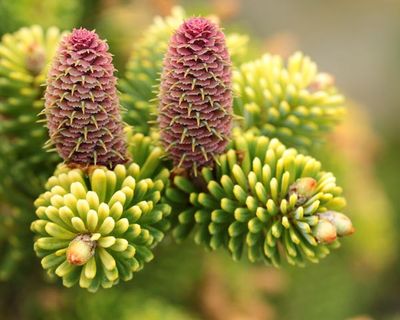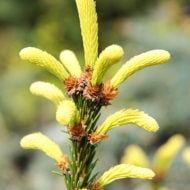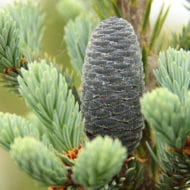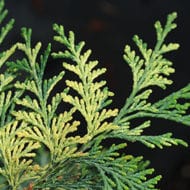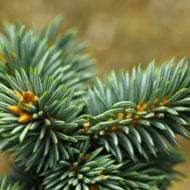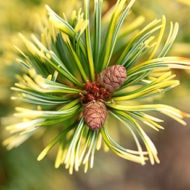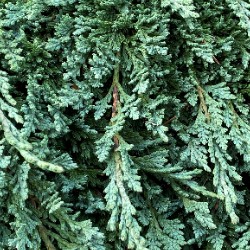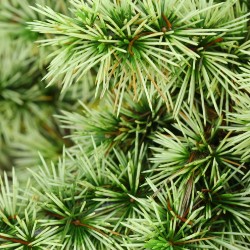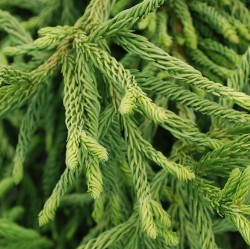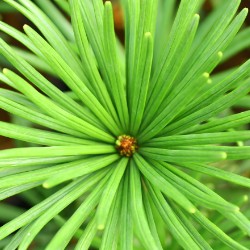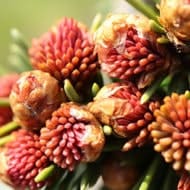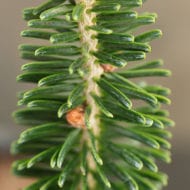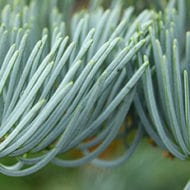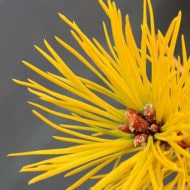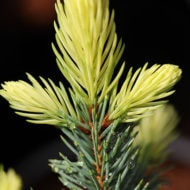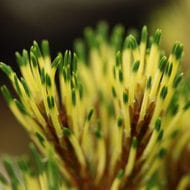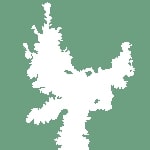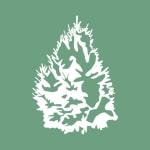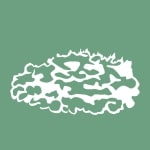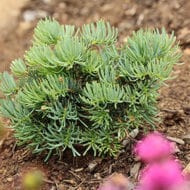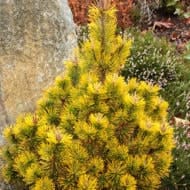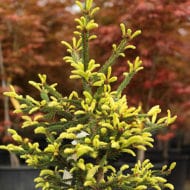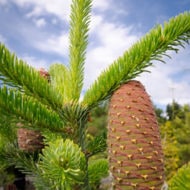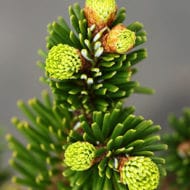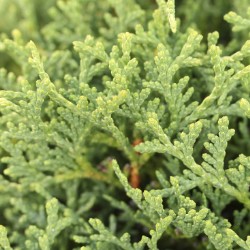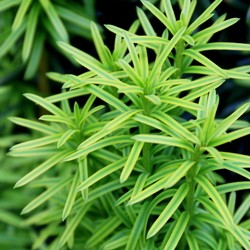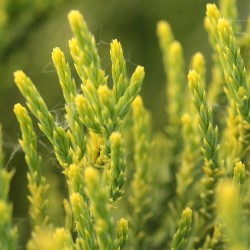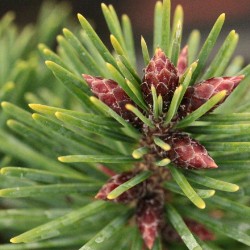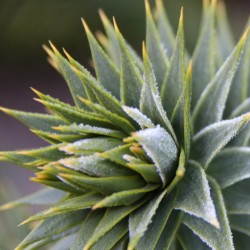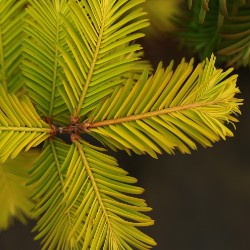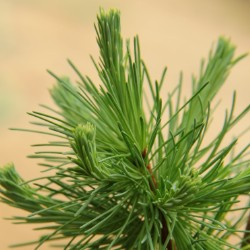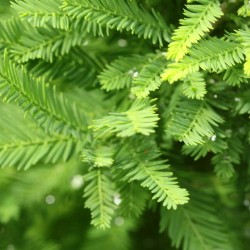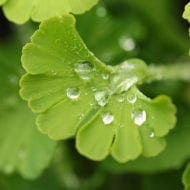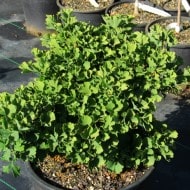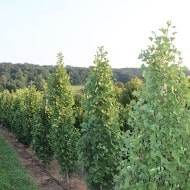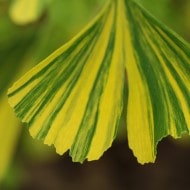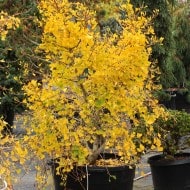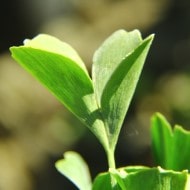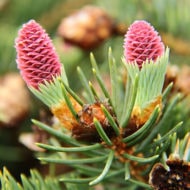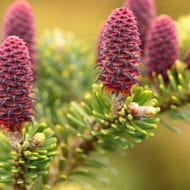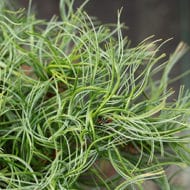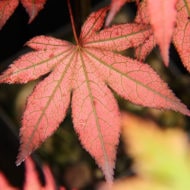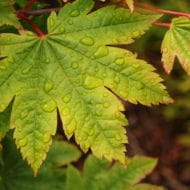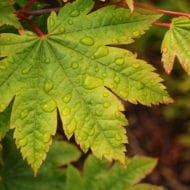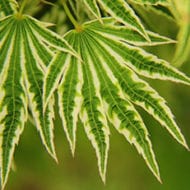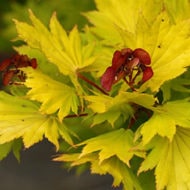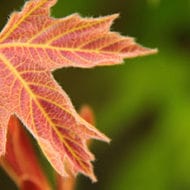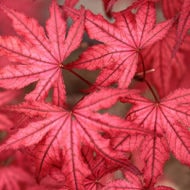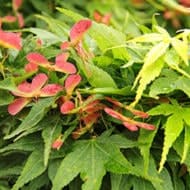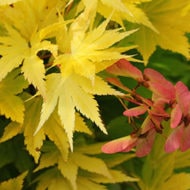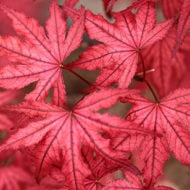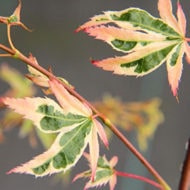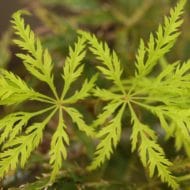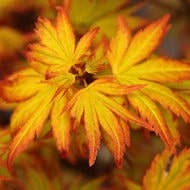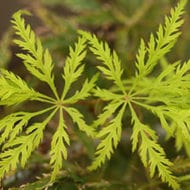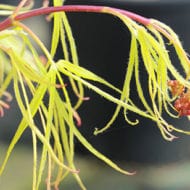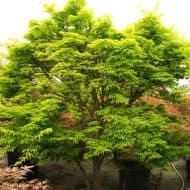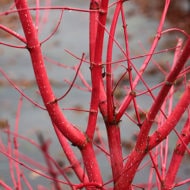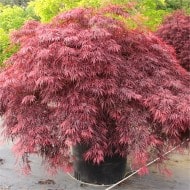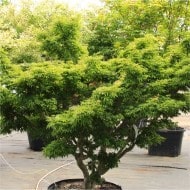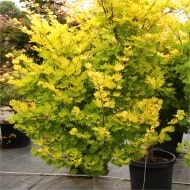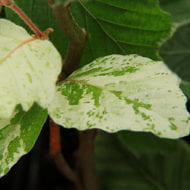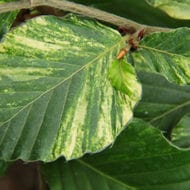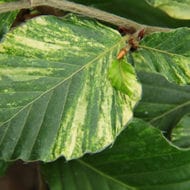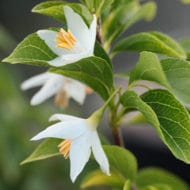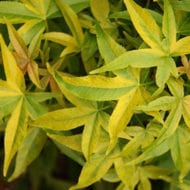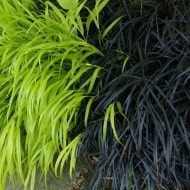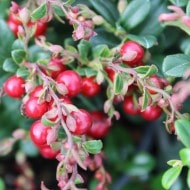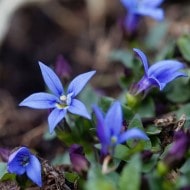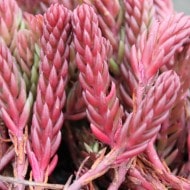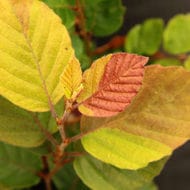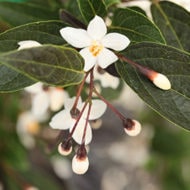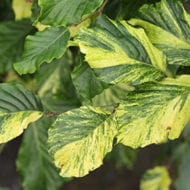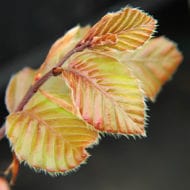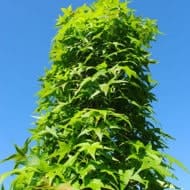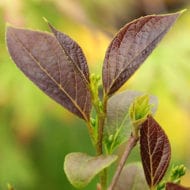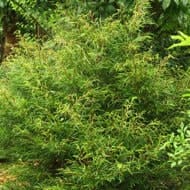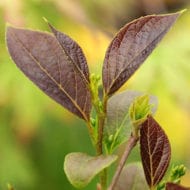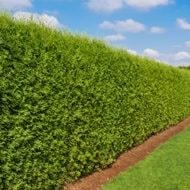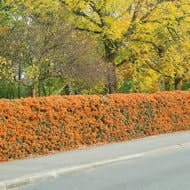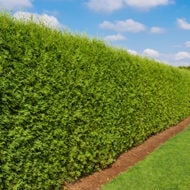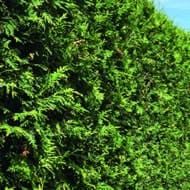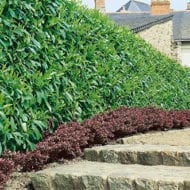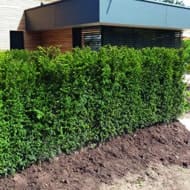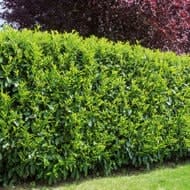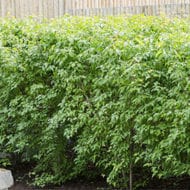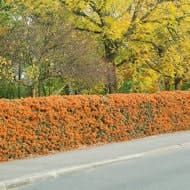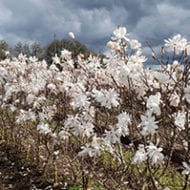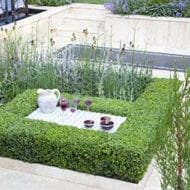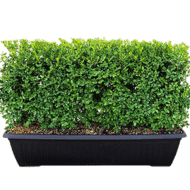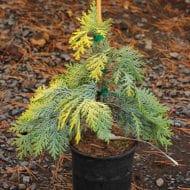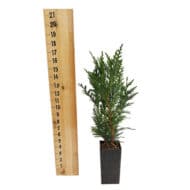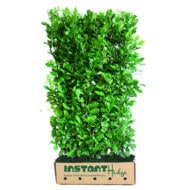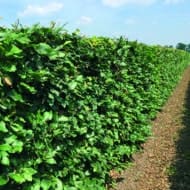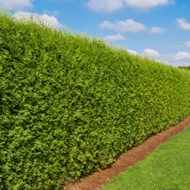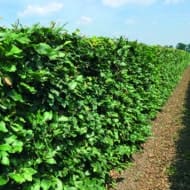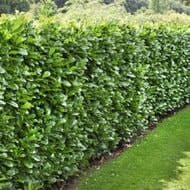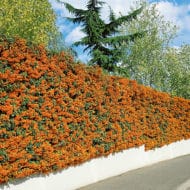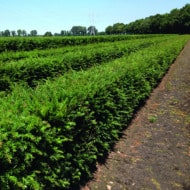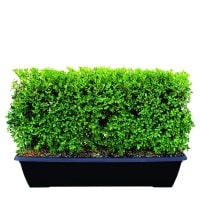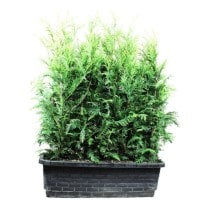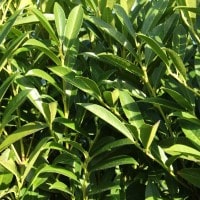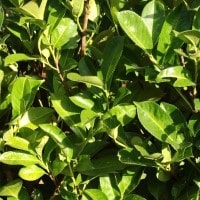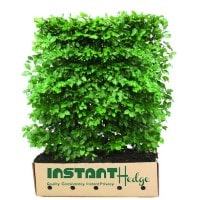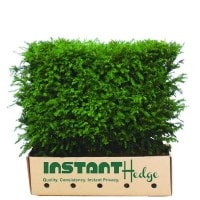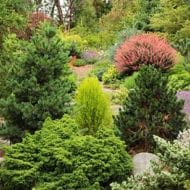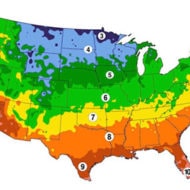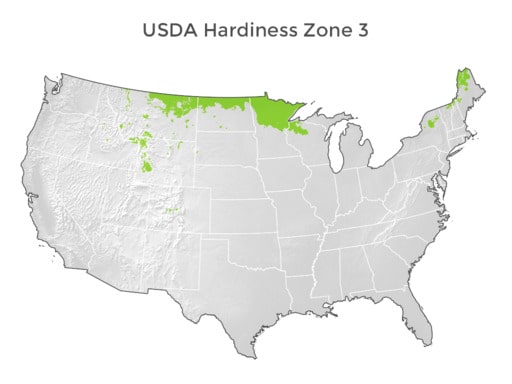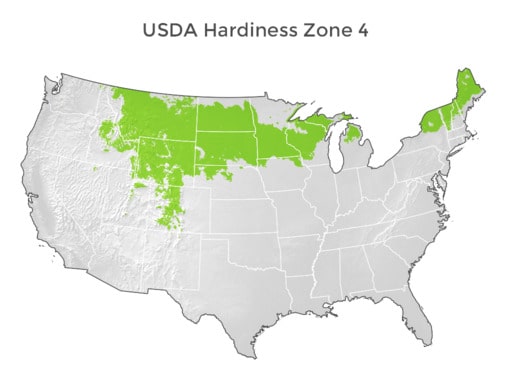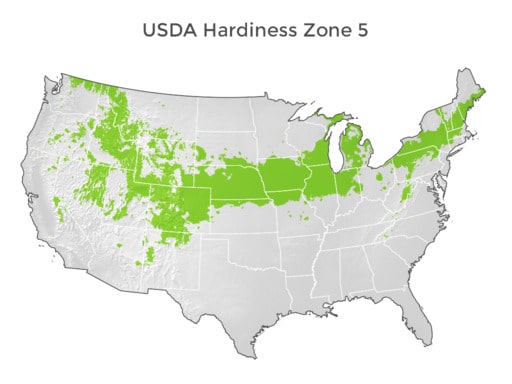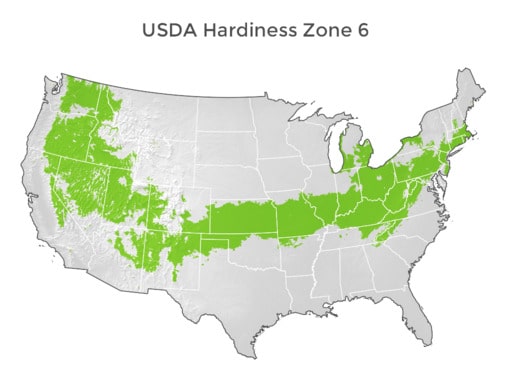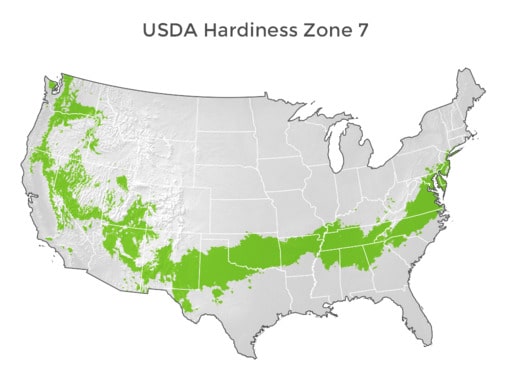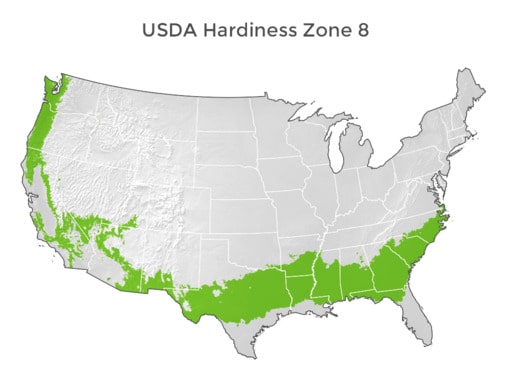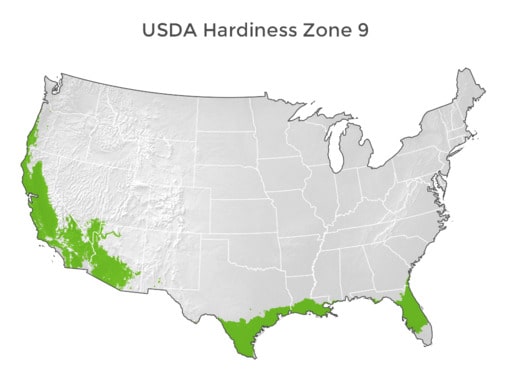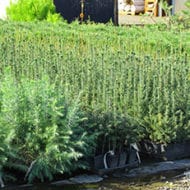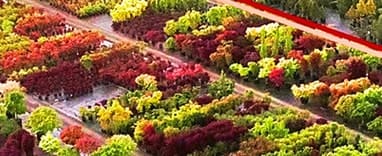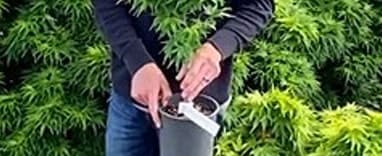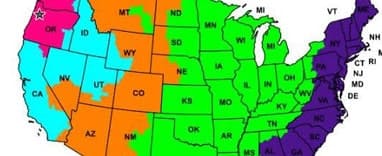Exceptional specimens for the discriminating buyer
Conifer Kingdom proudly offers an extensive collection of exquisite trophy trees for the discerning buyer. Customers looking for choice specimens have flown to our nursery from Long Island, Massachusetts, Chicago, Montana, San Francisco, and Minnesota to select trees, and landscape designers have flagged specific trees for discriminating customers throughout the United States.
Our container-grown Japanese maples and conifers are from 10 to 50 years old. These specimen trees have been dug from collectors’ gardens over the years or purchased from private collections as we have found them. We also offer large balled and burlapped (B&B) trees that are dug from the field and mountain-dug conifers from Washington, Oregon, and the Cascade Mountains that are over 100 years old. Our large collection of beautiful Japanese maples and windswept Japanese black pines have been trained for over 20 years and make delightful additions to Japanese gardens.
All of our trees are ready to be shipped in refrigerated freight trucks on pallets reinforced with ties, plastic, and Styrofoam as needed to ensure a safe journey. To minimize transplant shock, most of our trophies are in massive tree pots weighing up to 5,000 pounds. When the trees are so large that they don’t fit on a pallet, they are set on the floor of the truck. It’s important to note that a forklift or bobcat will be needed at its destination to offload these large trees from the truck.
Here are some outstanding specimens — the trophy trees from Conifer Kingdom priced from $395 to $75,000.
Abies procera ‘Rick’s Foxtail’
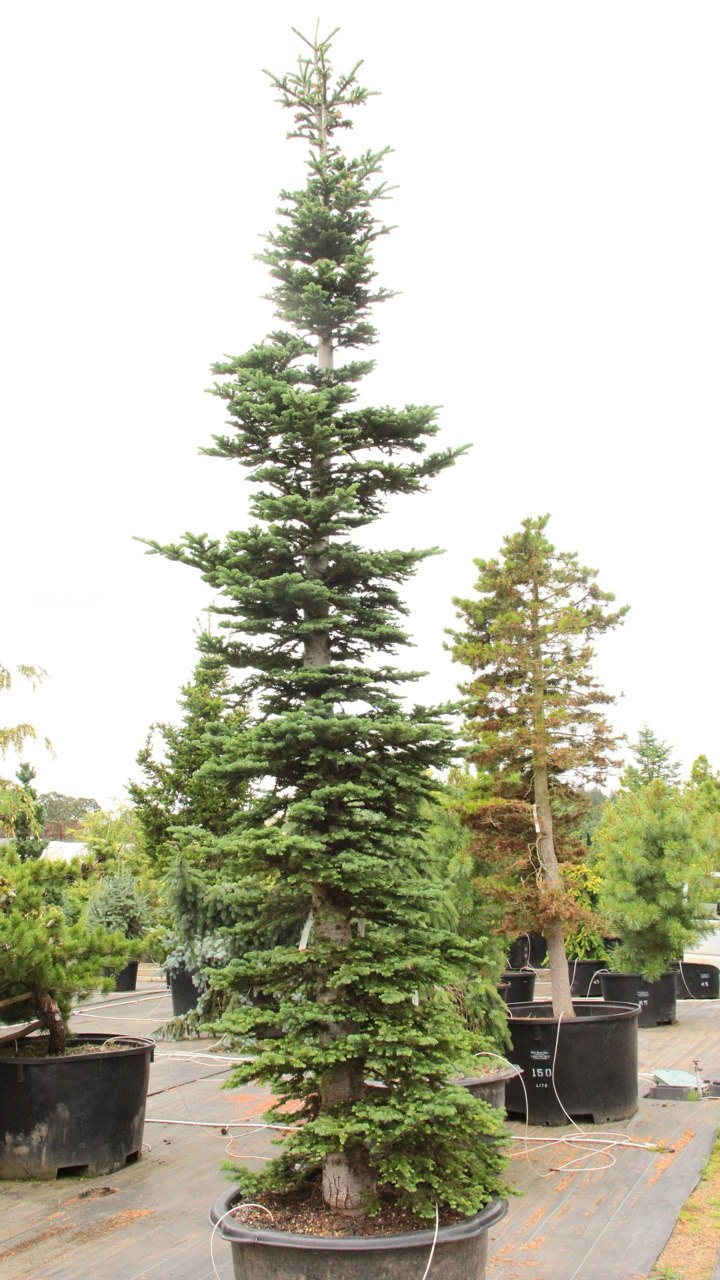
This narrow, columnar variety of noble fir is a perfect fit for a small space in need of a vertical accent. Short, widely spaced branches with sprays of dense, blue-green needles give a tail-like appearance extending from the thick trunk. ‘Rick’s Foxtail’ grows slowly, 2” to 4” per year, and attains a mature height of about 15’. It prefers full sun but will adapt to filtered light, and grows best in USDA zones 5 to 8.
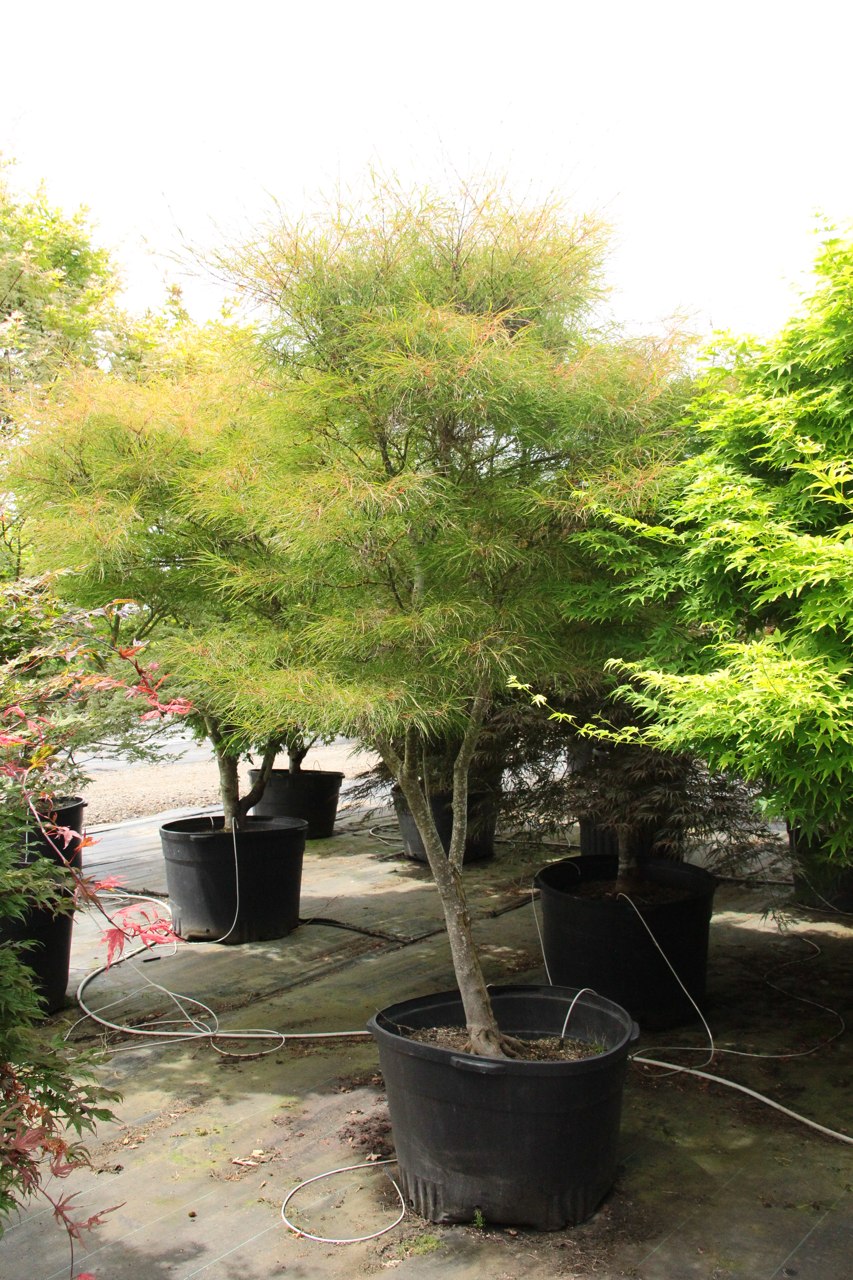
‘Fairy Hair’ is a unique, dwarf Japanese maple that is slow growing and well-suited for a container or small garden, a Japanese garden, or urban space. Its foliage is exceptionally thin and wispy — the blades of the leaves not much wider than the leaf veins. Its leaves are light green in the spring and darken to a medium green in the summer, then change to a bright crimson in the fall. ‘Fairy Hair’ will only grow to 3’-4’. It can thrive in sun or partial shade and is hardy in USDA zones 5 to 9.
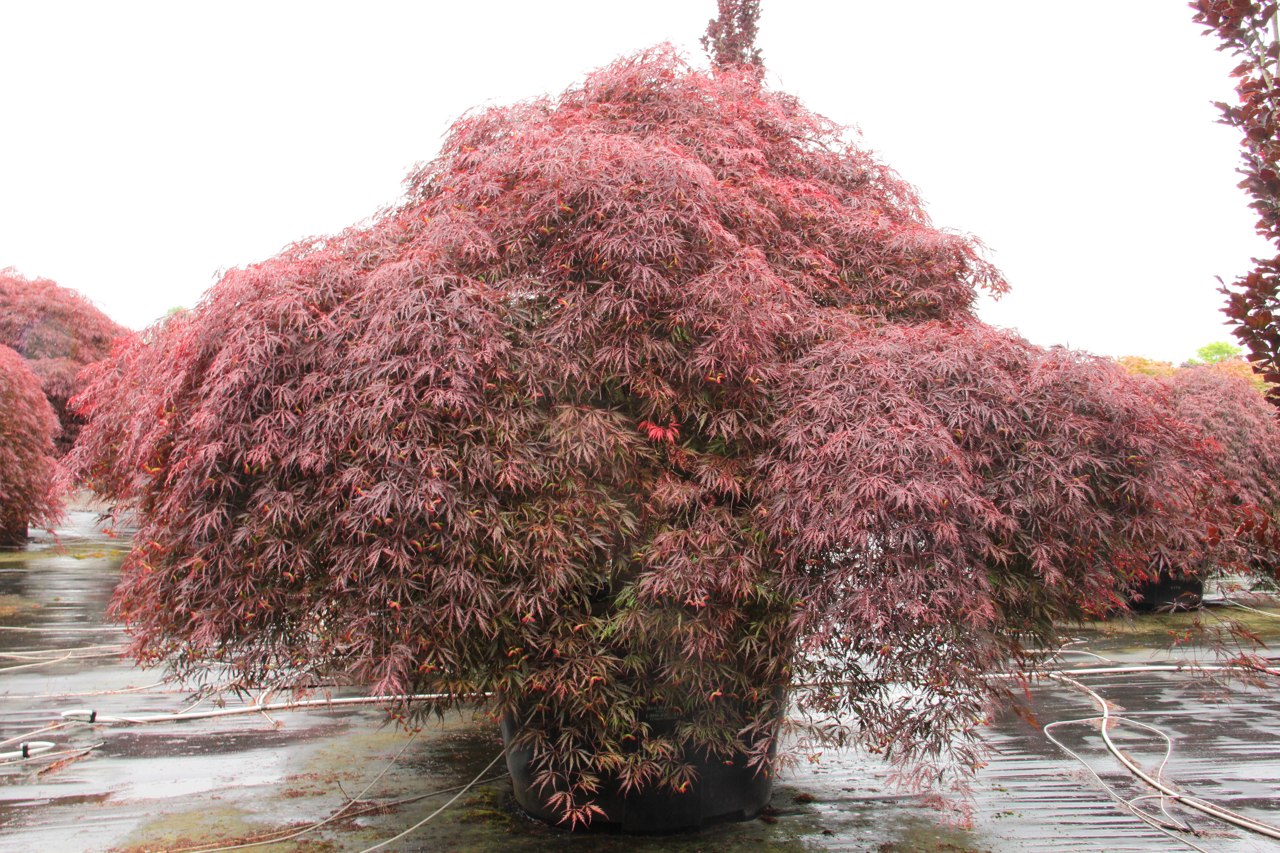
This spectacular Japanese maple has large, reddish-purple dissected leaves that keep their color throughout the summer, then turn crimson in the fall to match their red leaf stalks. It is twice as wide as it is tall, 7’H × 15’W, and perfect as a container tree, or for a Japanese-themed garden. ‘Inaba shidare’ grows in sun or partial shade in USDA hardiness zones 5 to 9.
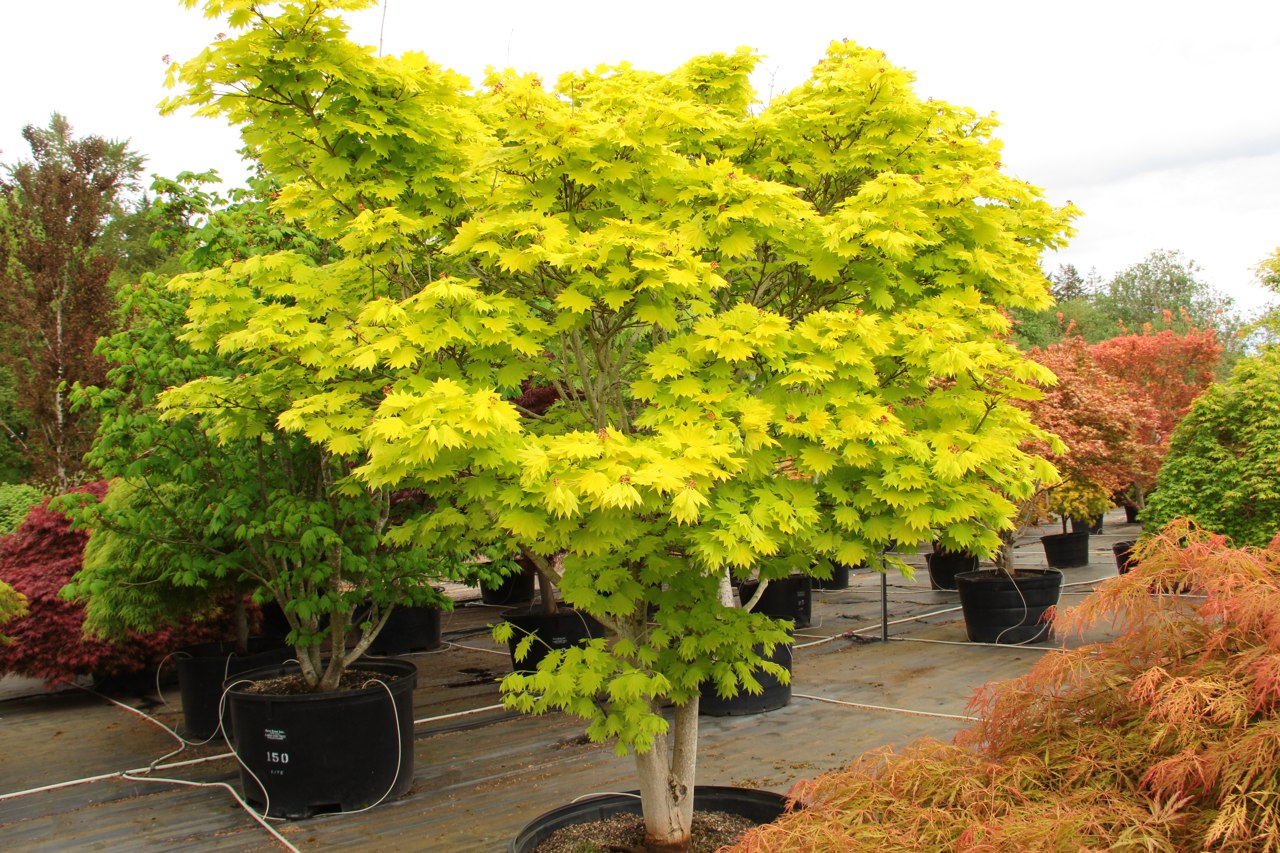
This beautiful full moon maple is a medley of colors three seasons out of the year. The leaves emerge a bright yellow in the spring, then gradually change to yellow-green in the summer, and glow a bright yellow, orange, and scarlet in the fall. ‘Aureum’ is slow growing, with a vase-shaped crown, and approximately 10’ high. It grows in sun or partial shade, although its colors are brighter in the sun, and it is hardy in USDA zones 5 to 9. This tree would brighten up a corner of the garden, or be an eye-catching accent in front of some taller, dark green conifers.
Acer shirasawanum ‘Autumn Moon’
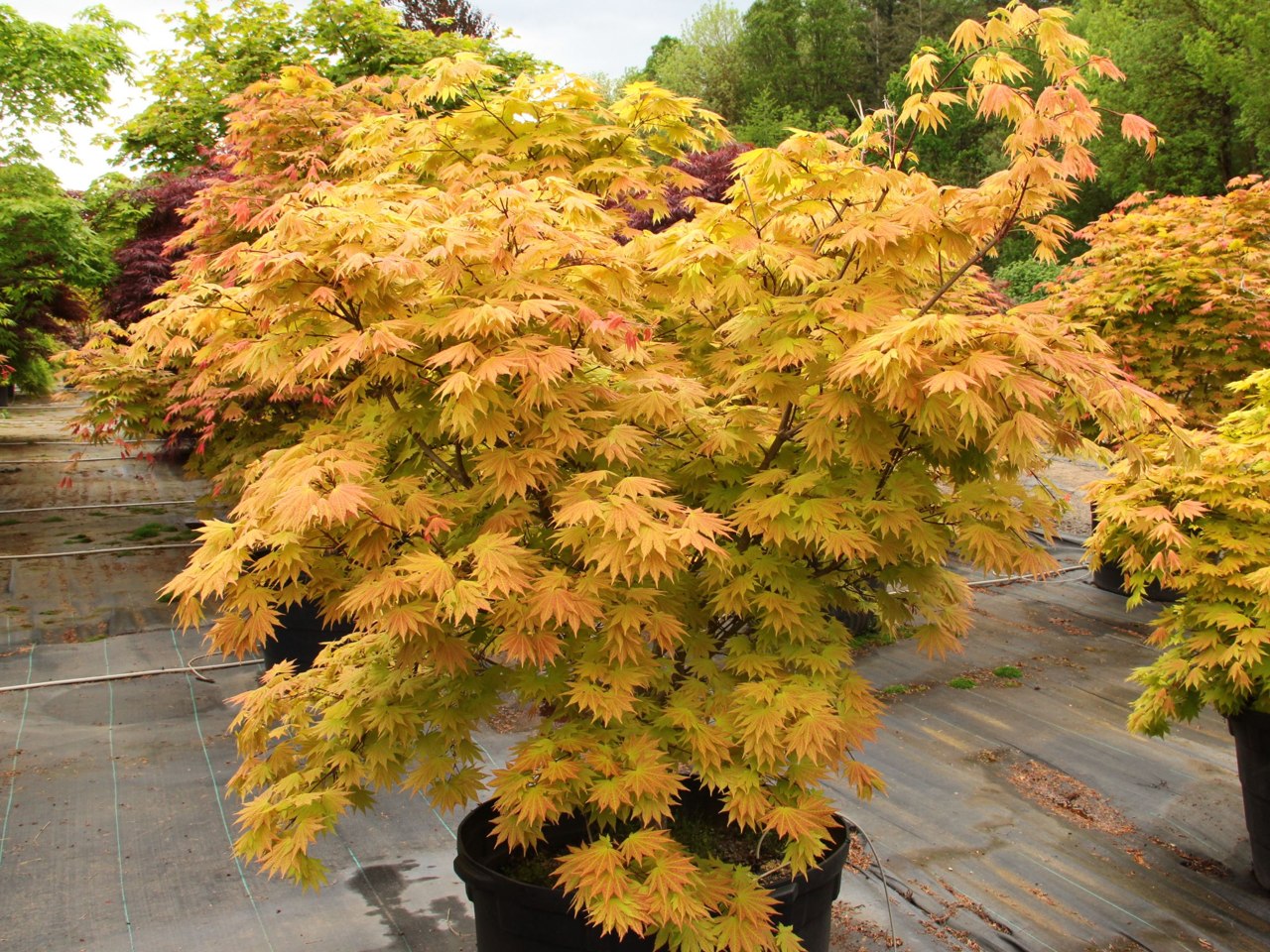
This small, elegant, full moon maple displays a beautiful orange-red overlay on yellow or light chartreuse leaves that lasts from spring until the orange-red deepens in the fall. This unusual coloring is strongest in full sun, although it will grow in partial shade with less of an orange-red overlay in the summer. It has a rounded habit with 6’H × 6’W dimensions, and grows in USDA hardiness zones 5 to 9. ‘Autumn Moon’ is a perfect addition to a small garden or grown in a container.
Acer shirasawanum ‘Green Snowflake‘
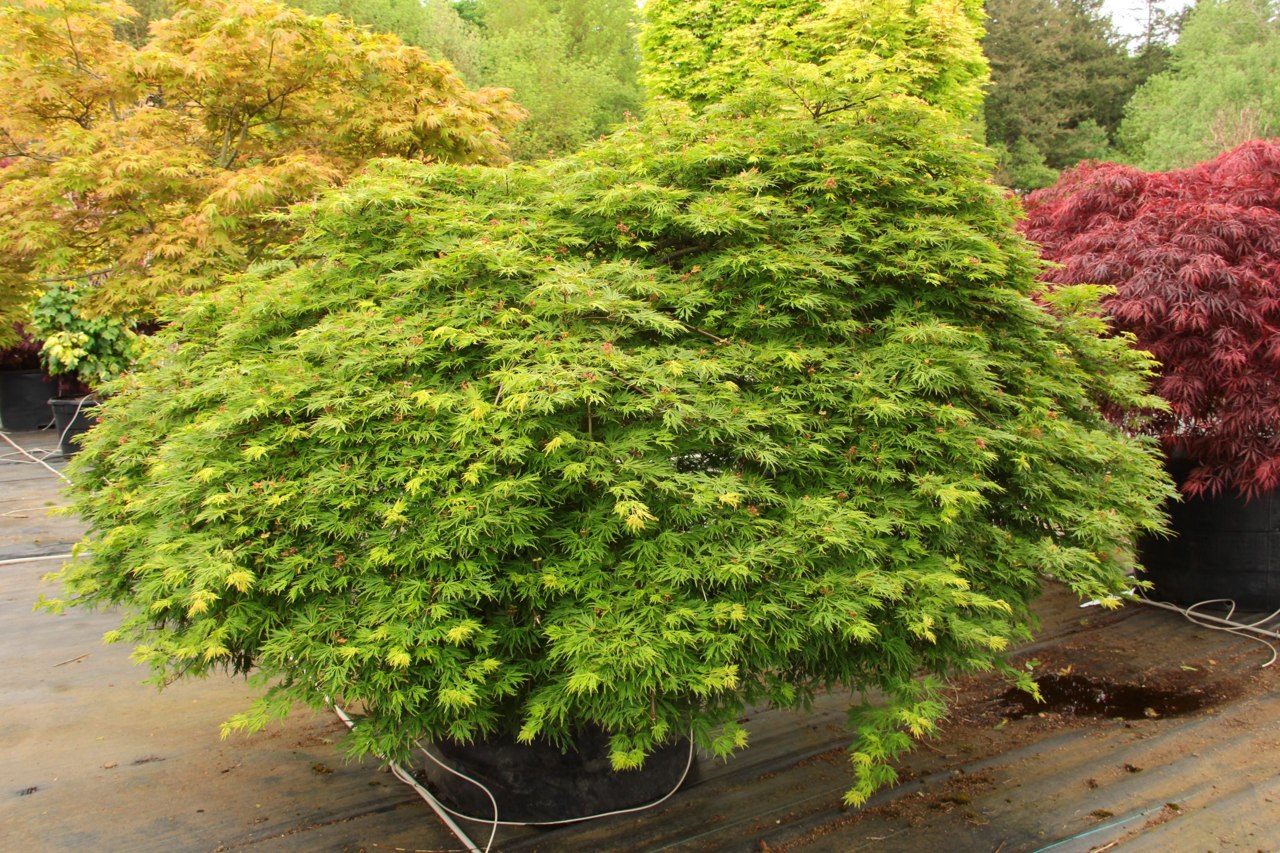
This unique, slightly weeping full moon maple has small, intricately dissected leaves that resemble green snowflakes. The foliage emerges light green in the spring, darkening to a medium green in the summer, then turning yellow-orange in the fall. This very slow growing, mature ‘Green Snowflake’ specimen is low and wide, and would be a handsome tree under a window or in a container. It grows well in sun or partial shade and in USDA hardiness zones 5 to 9. It is a cross between A. palmatum and A. shirasawanum.
Pinus contorta var. latifolia ‘Chief Joseph’
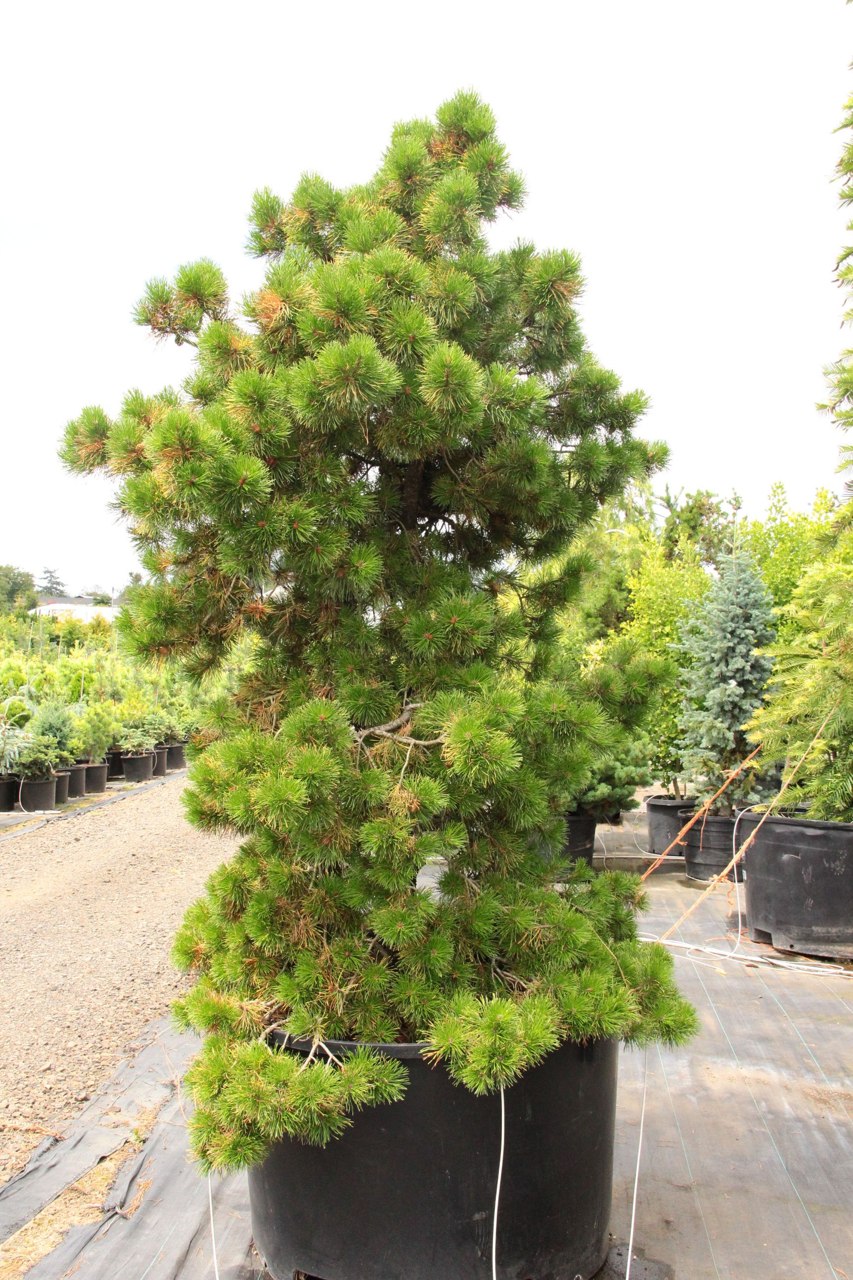
‘Chief Joseph’ is an unusual and beautiful lodgepole pine that puts on a colorful display when temperatures drop. In spring, this little pine’s long, soft needles are medium green. They lighten to chartreuse by late summer, and as fall transitions into winter, the needles turn a brilliant yellow-gold. Full sun and cold temperatures bring out the strongest colors of this tree. It has an irregular conical shape, grows in USDA hardiness zones 5 to 9, and is an excellent addition for a rock garden, urban garden, border, or courtyard.
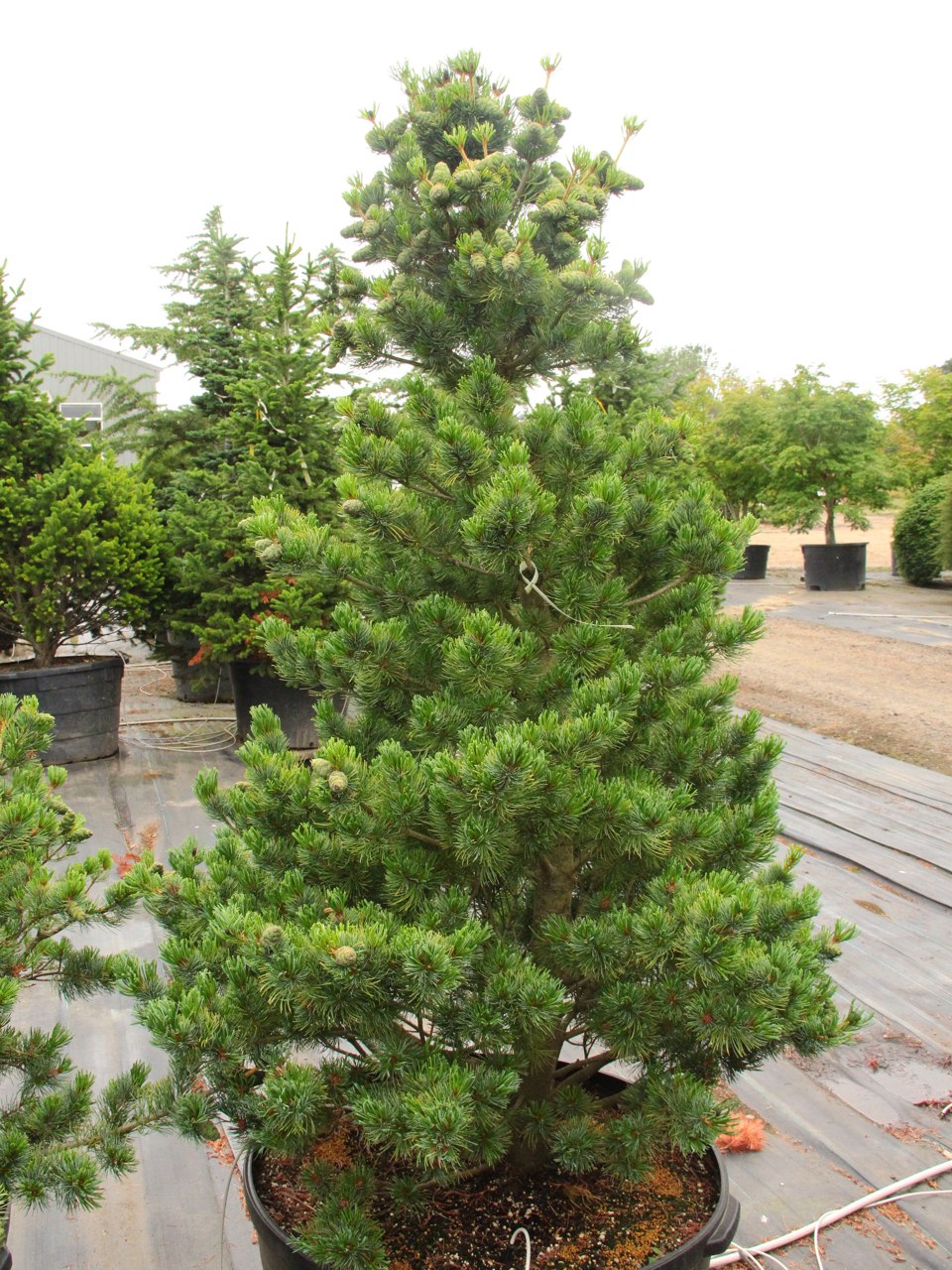
This cultivar of Japanese White pine has a broad, pyramidal form with abundant light green to blue-green needles. It grows relatively quickly — up to 12” per year in full sun and does best in USDA hardiness zones 4 to 7. ‘Shiobara’ is also sometimes known as ‘Shiobara-goyo’.
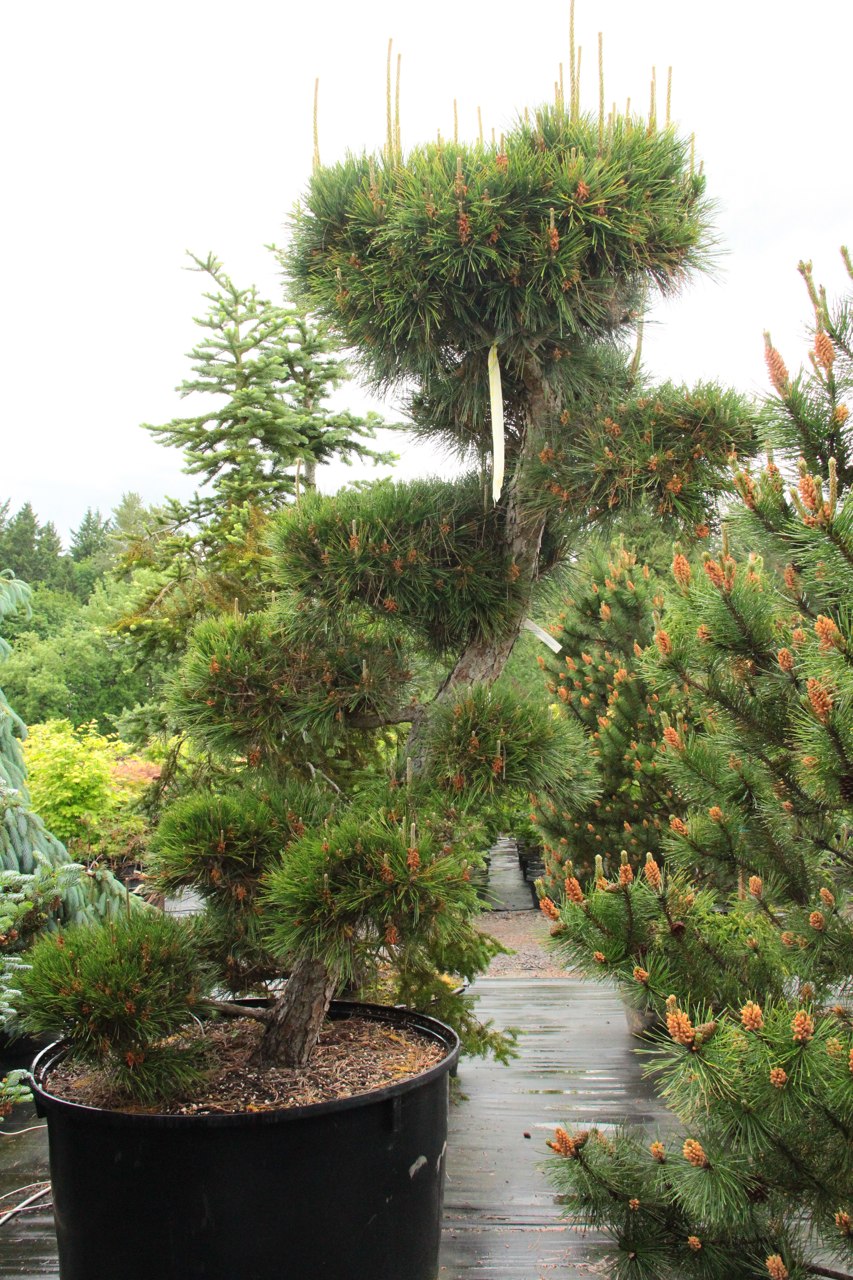
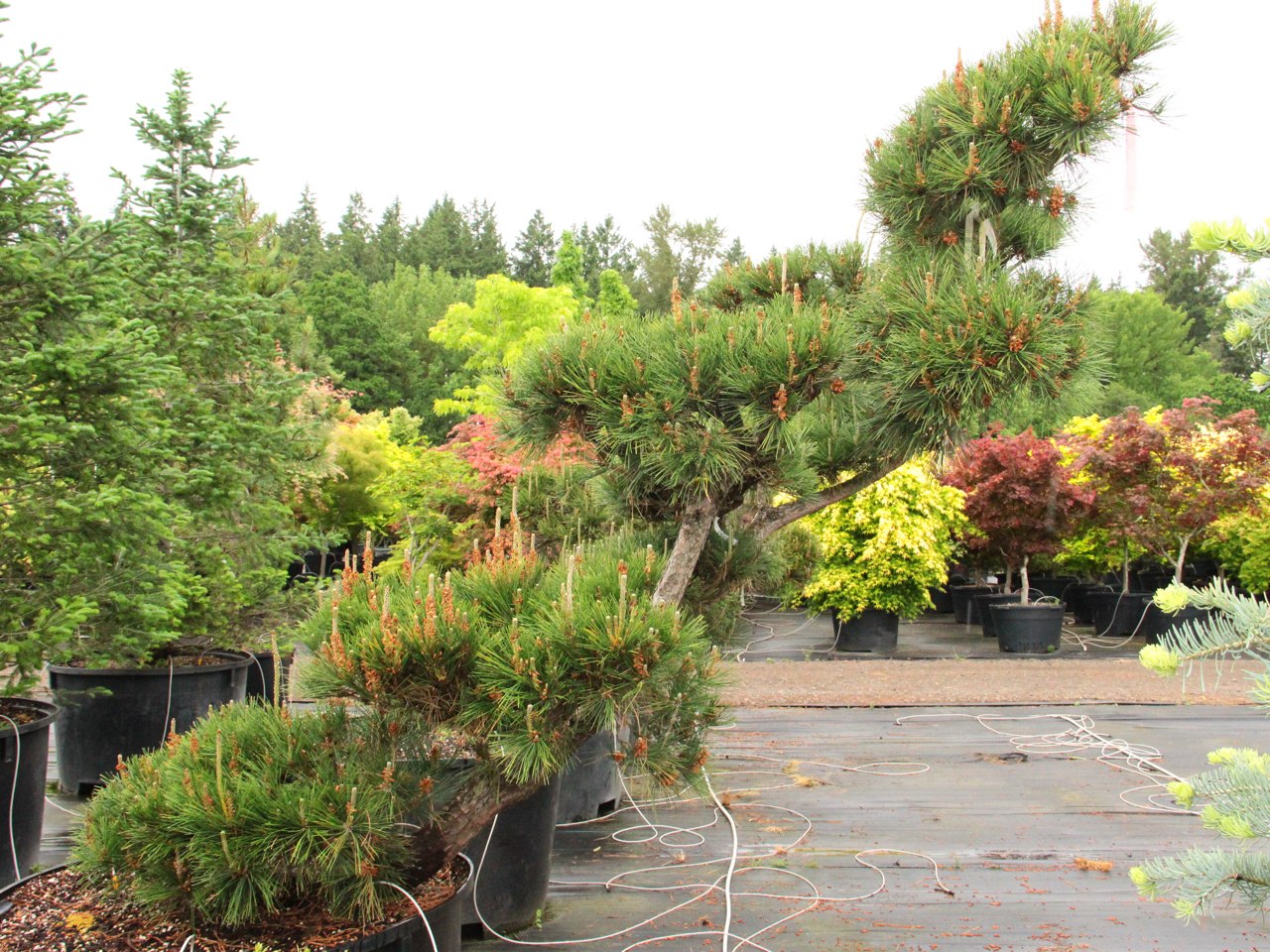
This irregular-growing species is iconic in Japanese gardens for its windswept habit and asymmetric branching structure. The long dark-green needles and furrowed bark make for quite stunning specimens as they age. Japanese Black Pine adds 12” to 15” of growth per year, does best in full sun and in USDA hardiness zones 5 to 8.


